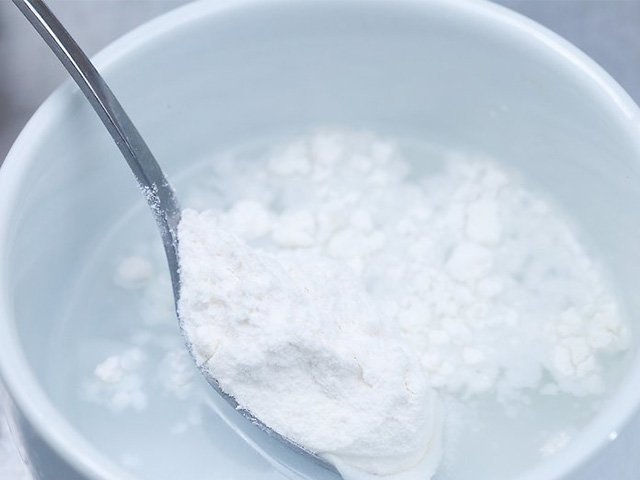How to wash organza to make it white
Over time, any snow-white material becomes dull and faded. It loses its presentable appearance, turns yellow or gray. In addition, if washed incorrectly, the fabric may shed and acquire a different shade or even color. Transparent organza is no exception.
It is important to use only safe methods and means to restore color so as not to damage the material. In this article, we will learn how to bleach organza tulle and other fabric products. Consider how to get rid of grayness and yellowness at home quickly.
Material features
Organza is a popular material for creating wedding and evening dresses, theatrical dresses, curtains and curtains. In addition, the fabric is used to make flower arrangements, ribbons and bows, and to decorate the hall. Organza will organically fit into every interior and divide the room into zones. And if you hang organza curtains, the room will become airy, and the light will be soft and even.
Organza is made from twisted rayon, polyester or silk. The first two options are the cheapest and most affordable. After processing, the fabric can be shiny or matte, it can shimmer in different shades or be monochromatic. In addition, embroidery and patterns are performed on the material.
Light and airy organza looks fabulous and beautiful, creates a real holiday. It represents a thin and light, transparent and airy fabric. Despite these properties, it is quite tough, strong and resilient. The fabric keeps its shape perfectly and retains its original appearance, therefore it is used for sewing fluffy skirts and dresses.

Most often organza is white, as it is used to make curtains, wedding dresses, veils, school bows. With prolonged use and storage, improper care, the material gradually fades, turns gray or turns yellow. Improper washing or ironing leaves yellow marks and streaks on the fabric. In this case, it is required to bleach the organza. How to do this correctly, we will consider further.
Five ways to whiten organza
- Soak the garment for 6-8 hours in salted cold water. To prepare the solution, use two to three tablespoons of salt in ten liters of water and add some suitable washing powder or gel. Then you need to wash your clothes or organza tulle in the washing machine or by hand in the usual way. Rinse things three to four times;
- Prepare a solution with brilliant green. To do this, add ten drops of the product to a glass of water and stir. Leave it on for two minutes. If a precipitate has formed, stir the composition again, otherwise green streaks will remain on the fabric. First, you need to wash the tulle or clothes in the usual way, and at the last rinse, add the prepared composition to the water. Place the items in the solution and let sit for three minutes. Squeeze the fabric slightly without curling and hang to dry. As a result, it will become snow-white and fresh, will return its previous presentable appearance;
- First you need to hand wash the organza. Then add the cap with blue to the rinse water and stir the composition thoroughly. Rinse the product first with the resulting composition, and then with clean water. When washing in a typewriter, a cap of blue is added to the rinse aid compartment. By the way, blue will help to effectively bleach flax and;
- Laundry soap is an effective and affordable tool for eliminating yellowness and whitening. Grate a block with a medium grater, add to water and bring to a boil. Mix the resulting soap composition with cool water and soak the yellowed items in a warm solution. Leave it on for five to seven hours. After the procedure, you need to wash the fabric with your hands and rinse three to four times;
- After the main wash, soak the organza in the starch solution for a few minutes until it turns white. To do this, dilute 250 grams of starch with warm water. Dip the product into the resulting composition, and then rinse in clean water. As a result, the material will turn white and hold its shape well. In addition, after such treatment, less dust is attracted to the fabric, which prolongs the freshness and cleanliness of things, simplifies subsequent washing.

Do not use ammonia or hydrogen peroxide for bleaching, as they are not suitable for synthetics and delicate fabrics. In this case, you need to use hot water with a temperature of 60 degrees, which is unacceptable for such materials. With such washing, they are deformed, shrink and lose their attractive appearance. Hydrogen peroxide and ammonia are used for natural fabrics. They can and cotton.
Use bleach with caution. Choose oxygenated formulations as they are gentle and gentle. At the same time, they wash quickly and efficiently. Do not wash organza with chlorine bleach!
Do any whitening procedures in water with a temperature of up to 35 degrees. To keep the fabric white and fresh for a long time, acquire a beautiful shine, while rinsing, add two teaspoons of table vinegar per liter of water. After bleaching, do not iron the organza, but let the material dry and smooth under natural conditions!
Do not twist or squeeze the organza too hard. Be sure to read the label and follow the recommendations. It is important to properly wash, iron and dry your organza to keep it whitened.
How to wash white organza
In order for the white organza to retain its color and attractive appearance for a long time, you need to wash the product correctly. It is better to do it manually. Select the appropriate detergent for the type and color of fabric. Liquid products, shampoos, and gels are good options. How to choose a good gel for washing, see.
Before washing organza curtains or other items, dilute the detergent in warm water and soak the garment for two hours. Then rinse lightly, flatten the material and leave to dry naturally indoors or outdoors.
Items with embroidery, beads and other decorative details can only be washed by hand. Or you need to remove the decor first. Organza can be washed in a washing machine in a delicate mode with a temperature of up to 40 degrees with spinning up to 500 rpm or without spinning.
Wring the washed items lightly. It is recommended to dry the organza in an upright position. Curtains and bulky items are hung on a rope, clothes are hung on a hanger. It is important to carefully spread and smooth the material with your hands, leave to dry away from batteries, sunlight and electrical appliances.

Do I need to iron the organza
It is not necessary to iron this delicate material. In this case, many are interested in how to wash the organza so as not to iron it. Wash the product by hand or in a typewriter machine on a delicate cycle. Then, without wringing, let the water drain. After that, hang curtains and organza tulle on the windows, and clothes on a hanger. Organza will dry out in a short time and smooth out under the weight of its own weight.
If you do not want to iron and wash curtains or voluminous organza clothes, use steaming. Walk a steam generator or an iron with a vertical steam function over the material, holding the device at a distance of 15-20 centimeters from the fabric.
Alternatively, you can hang your clothes over a bathtub or container of boiling water. It is important that the hem of the product is at some distance from the water. Steam treatment will smooth and clean the material, remove wrinkles and creases, remove dust and stains. This method is great for smoothing out a wedding dress or veil.
If you do decide to iron, use only the minimum heating temperature of the iron. Otherwise, yellow marks or even burned areas will remain on the material. It is better not to iron dresses and skirts with a lot of folds, but to wash them without spinning and hang them on a hanger in the room or in the fresh air, leave them to dry completely.

How to properly iron organza
Ironing is performed at the minimum heating temperature of the iron and only on the wrong side. In this case, the material must be wet. After washing, when the water has drained off, place the item on a thick cloth, such as a towel. Cover the top with gauze, tissue paper, cotton, or other thin cloth. Then iron the inside out with a warm iron.
